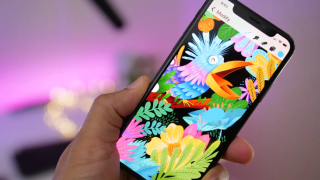This New Approach For 3D Printing Human Organs Brings Us Closer To Future Transplants
Dhir Acharya - Sep 10, 2019

Scientists have copied the “lost wax” technique, used in producing renaissance bronzes, for 3D-printing human organs with their own blood vessels.
- India’s First 3D-Printed Building With Indigenous Construction Materials
- KFC Plans To Make 3D-Printing Chicken And Add It To Their Menu
- Scientists Use Math To 3D Print The World's Strongest Steel
Scientists have copied the “lost wax” technique, used in producing renaissance bronzes, for 3D-printing mini version of human organs with their own blood vessels.
This is an advance which moves the field closer to making life-saving organ transplants; just in the US, there are over 100,000 people are waiting for transplants, 20 of them die each day.
In the past ten years, scientists have created mini-hearts, kidneys, and brains, called “organoids,” in laboratories for studying diseases such as heart attacks, cancer, and dementia.
However, those models are as small as a lentil due to a critical ceiling. Researchers cannot get the tubes mimicking blood vessels so they have struggled to get nutrients and oxygen into their core.
This limitation has prevented organoids from becoming full-sized transplant organs in the lab, tailor-made from the cells of the patient, not subject to rejection.

But now, researchers with the lead of Jennifer Lewis at Harvard University’s Wyss Institute for Biologically Inspired Engineering, have found an ingenious way to sculpt channels which meander like real blood vessels using mini-organs.
It even has its own name, SWIFT, short for Sacrificial Writing into Functional Tissue. First, they make building blocks for organs using human stem cells that are chemically cajoled into becoming mini-brains and hearts.
Then they mix hundreds of thousands of these blocks to generate a slurry, compacting it at a low temperature so as to form a cell matrix that’s almost as dense as the human tissue.
Next, the researchers use a 3D printer, a nozzle which contains an ink made of gelatin and red dye descends into the mixture, to deposit the contents through the matrix of cells according to a branch pattern that’s pre-ordained.
When the researchers have printed the network, the mix is heated to 37 degrees C. The ink melts and leaves channels that are lined with the endothelial cells in human vessels.
The last thing to do is perfusing the mini-organs using a nutrient and oxygen-rich liquid. With this method, the 1.5cm mini-heart beat for over a week on its own.

Sébastien Uzel, a co-author from the Wyss Institute says:

However, the researchers could not help adding some cadenzas to their feat. They injected a drug increasing human’s heart rate through the vessels. It immediately doubled the mini-heart rate. Additionally, the team made a wedge of heart tissue as well as 3D-printed a copy of the primary coronary artery along with one branch onto it, which could come handy for a heart transplant.
According to Donald Ingber, Found Director of Wyss Institute:

Featured Stories

Features - Jan 23, 2024
5 Apps Every Creative Artist Should Know About

Features - Jan 22, 2024
Bet365 India Review - Choosing the Right Platform for Online Betting

Features - Aug 15, 2023
Online Casinos as a Business Opportunity in India

Features - Aug 03, 2023
The Impact of Social Media on Online Sports Betting

Features - Jul 10, 2023
5 Most Richest Esports Players of All Time

Features - Jun 07, 2023
Is it safe to use a debit card for online gambling?

Features - May 20, 2023
Everything You Need to Know About the Wisconsin Car Bill of Sale

Features - Apr 27, 2023
How to Take Advantage of Guarantee Cashback in Online Bets

Features - Mar 08, 2023
White Label Solutions for Forex

Review - Jul 15, 2022
Comments
Sort by Newest | Popular